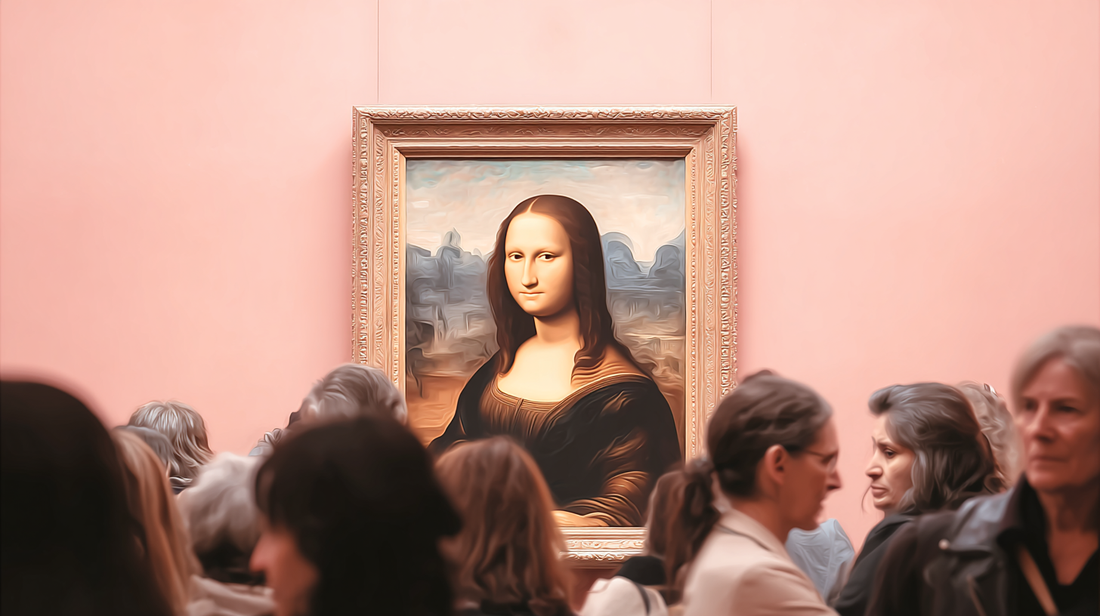Art has always been a profound medium for human expression, encapsulating complex emotions, historical contexts, and intricate ideas. Some of the world's most renowned paintings carry hidden meanings and symbolisms that go beyond their immediate visual impact.
In this article we delve into the secrets behind five famous artworks, revealing the deeper narratives that contribute to their enduring allure and mystery.
1. Mona Lisa by Leonardo da Vinci
The Mona Lisa is arguably the most famous painting in the world, known for its enigmatic smile and mysterious allure. Painted by Leonardo da Vinci between 1503 and 1506, this masterpiece has been the subject of numerous theories and interpretations.
Symbolism and Hidden Meanings
- The Smile: One of the most debated aspects of the Mona Lisa is her smile. Some art historians suggest that it represents the ideal of feminine beauty during the Renaissance, while others believe it conveys a sense of mystery and intrigue.
- Background: The surreal landscape in the background, with winding paths and distant mountains, may symbolize the connection between humanity and nature, or the journey of life itself.
- Eyes: The eyes of the Mona Lisa appear to follow the viewer, a technique that creates a personal connection and draws the observer into the painting.
2. Self-Portrait with Thorn Necklace and Hummingbird by Frida Kahlo
Frida Kahlo’s Self-Portrait with Thorn Necklace and Hummingbird (1940) is one of her most iconic and symbolic works. Painted after her painful divorce from Diego Rivera, the piece goes far beyond a simple likeness and instead serves as a visual diary of her suffering, resilience, and cultural identity.
Symbolism and Hidden Meanings
- The Thorn Necklace: Wrapped tightly around Kahlo’s neck, the thorns pierce her skin and draw blood, a striking symbol of pain and martyrdom.
- The Hummingbird: In Mexican folklore, a hummingbird often represents hope and love, but here the lifeless bird hanging from the necklace suggests the loss of both.
- Animals as Symbols: The black cat lurking behind her suggests bad luck and looming danger, while the monkey — a gift from Rivera — tugs at the thorn necklace, hinting at the destructive pull of her relationship.
- Nature as Reflection of Self: The lush green background filled with leaves and insects evokes a sense of life and regeneration, underscoring Kahlo’s enduring spirit despite personal suffering.
This self-portrait blends intimate personal narrative with cultural references, making it one of the most layered and revealing works of art in history.
3. The Persistence of Memory by Salvador Dalí
The Persistence of Memory, painted by Salvador Dalí in 1931, is a quintessential example of surrealist art. Known for its melting clocks draped over a desolate landscape, this painting challenges our perception of time and reality.
Symbolism and Hidden Meanings
- Melting Clocks: The distorted, melting clocks are often interpreted as a rejection of the rigid, linear perception of time, suggesting that time is fluid and subjective.
- Ants and Decay: Ants crawling over one of the clocks symbolize decay and the relentless passage of time.
- Dreamlike Landscape: The barren landscape reflects the subconscious mind, with elements that defy logical explanation, embodying the surrealist fascination with dreams and the irrational.
4. Guernica by Pablo Picasso
Pablo Picasso’s Guernica (1937) is one of the most searing political artworks ever created, painted in response to the bombing of the Basque town of Guernica during the Spanish Civil War. The mural-sized painting is a chaotic, fragmented depiction of suffering and brutality, and it remains a universal anti-war symbol to this day.
Symbolism and Hidden Meanings:
- Bull and Horse: Central to the painting are a bull and a horse, representing brutality and the suffering of innocent civilians, respectively.
- Broken Sword: The broken sword held by a fallen soldier signifies the defeat and destruction brought about by war.
- Light and Dark: The use of stark black and white tones creates a dramatic contrast, emphasizing the horror and despair of the scene.
What’s fascinating for a modern audience is that Picasso himself was also known to dabble in paint by numbers later in life. While he is remembered as the revolutionary Cubist who broke apart form and perspective, his curiosity extended to simpler, more playful modes of painting as well.
This shows that even the most groundbreaking artists valued structured creativity as a way of experimenting and sometimes even relaxing.
5. The Garden of Earthly Delights by Hieronymus Bosch
The Garden of Earthly Delights by Hieronymus Bosch, created between 1490 and 1510, is a triptych that vividly illustrates the transition from paradise to hell. Known for its intricate detail and bizarre imagery, this painting is rich with symbolic meaning.
Symbolism and Hidden Meanings
- Triptych Structure: The three panels depict the Garden of Eden, the earthly pleasures of humankind, and the torments of hell. This structure underscores the moral consequences of human actions.
- Surreal Creatures: The bizarre and fantastical creatures in the central panel symbolize the perils of indulgence and the temptations of the flesh.
- Hell Panel: The rightmost panel, portraying hell, is filled with nightmarish scenes that warn of the dire consequences of sin and moral corruption.
Discover the Hidden Meanings in Your Own Art
The masterpieces we’ve explored from Frida Kahlo’s symbolic self-portraits to Picasso’s Guernica remind us that art is never just about what we see on the surface. Behind every brushstroke lies a deeper story: of politics, identity, spirituality, or personal struggle. These layers are what make great paintings resonate across generations.
And here’s the best part: you don’t need to be a Picasso or a Kahlo to create something meaningful yourself. At Kiki’s Club, you can start your own painting journey in two ways:
- If you want to create something truly personal, try one of our custom paint by numbers kits. Turn your favourite photo, whether it’s of a loved one, a pet, or a travel memory, into a canvas with its own story.
- If you’d prefer a stress-free way to begin, our beginner-friendly kits are designed to help you paint without any pressure. With clear outlines and vibrant paints, they’re perfect for building confidence while still creating a piece you’ll be proud to display.
Like the artists who found meaning in every detail, you can also uncover joy, calm, and creativity in your own painting practice. The only question is: what story will your canvas tell?
Also read: Most Famous Male Painters In Art History and Is Paint by Numbers Easy or Hard?

